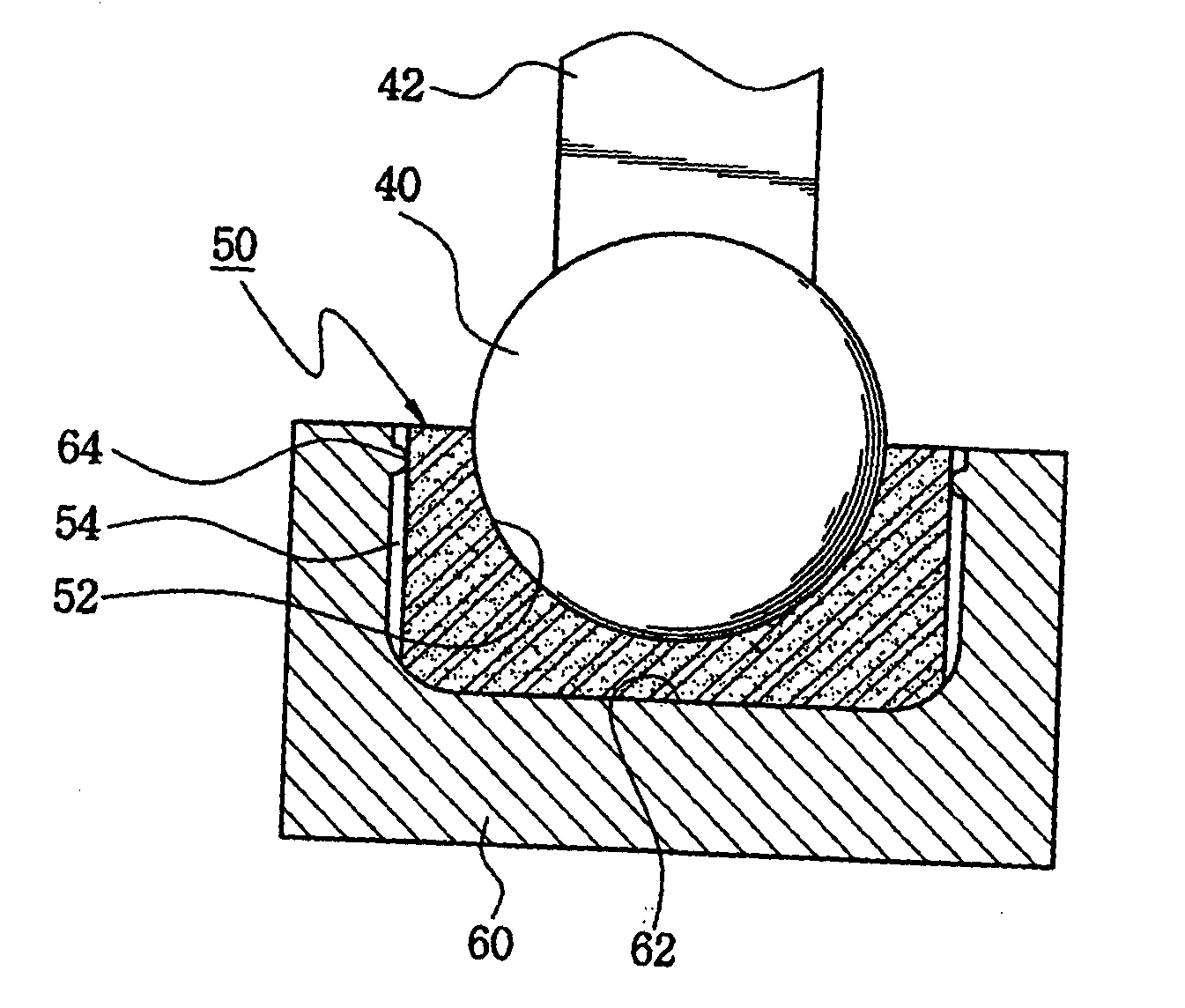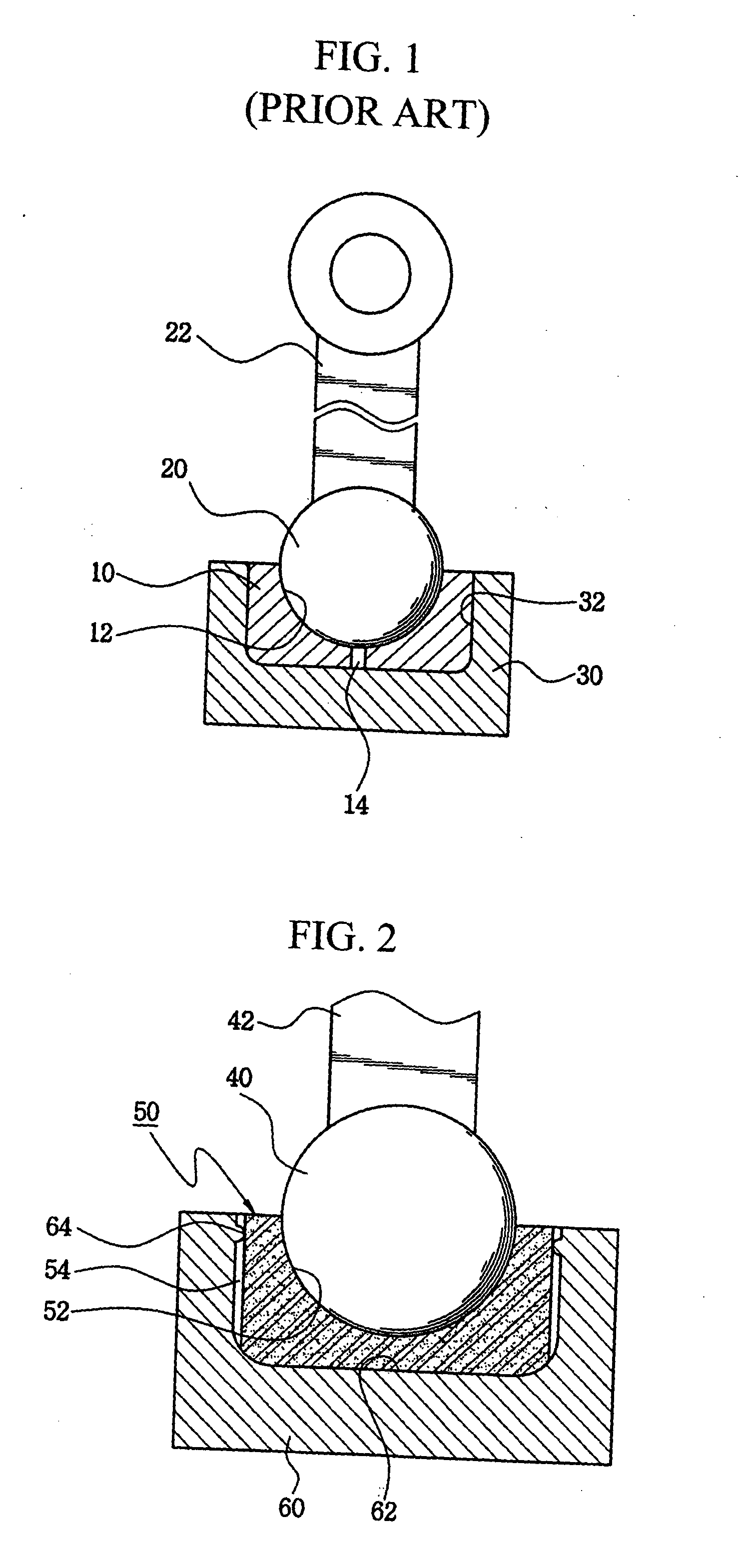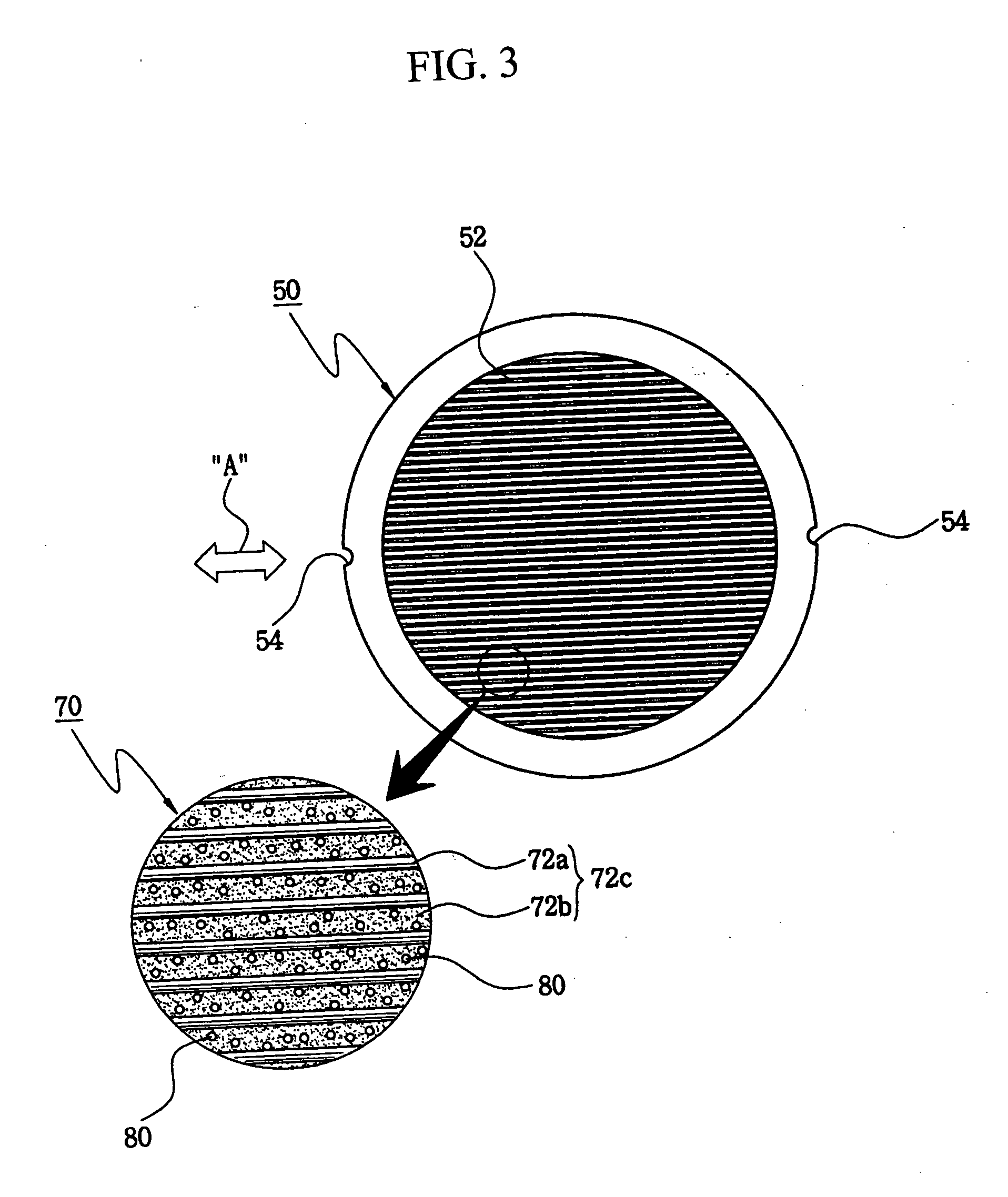Bearing assembly and method for manufacturing the same
a technology of bearings and parts, applied in the direction of sliding contact bearings, connecting rod bearings, couplings, etc., can solve the problems of increased production costs, reduced allowable load, and difficult cutting, so as to improve reliability, reduce friction coefficient of bearing surfaces, and improve lubrication performance
- Summary
- Abstract
- Description
- Claims
- Application Information
AI Technical Summary
Benefits of technology
Problems solved by technology
Method used
Image
Examples
first embodiment
[0051] Referring to FIGS. 7A and 7B, in the bearing assembly of the first embodiment, the fiber reinforced composite 70 which is constructed by laminating the plurality of uni-directional prepregs 72 is subjected to hot compression molding to be used as the material for the hemispherical bearing 50. A mold set 90 used for the hot compression molding of the fiber reinforced composite 70 comprises a convex mold 92 and a concave mold 94. A core 96 for forming the air channels 54 of the hemispherical bearing 50 is provided on an inner surface of the concave mold 94.
[0052] Referring to FIGS. 5, 6 and 7A, the fiber reinforced composite 70 is supplied between the convex mold 92 and the concave mold 94 of the mold set 90 to perform the hot compression molding of the fiber reinforced composite 70. The thermoplastic resin particles 80 or self-lubrication particles 84 are uniformly distributed on the surface of the uppermost layered unidirectional prepreg 72c of the fiber reinforced composite ...
second embodiment
[0057] As shown in FIGS. 11 and 13, the fiber reinforced composite 270 comprises a uni-directional prepreg 272, a plurality of woven fabric prepregs 274 and staple-fiber prepregs 276. Each of the uni-directional prepreg 272 and the woven fabric prepregs 274 comprises reinforcement fibers 272a and 274a and matrixes 272b and 274b in the same manner as the uni-directional prepreg 172 and the woven fabric prepreg 174 in the second embodiment, respectively. Generally, the staple-fiber prepregs 276 can be manufactured by a process that is simpler than the process for manufacturing the uni-directional prepreg 272 and the woven fabric prepregs 274, and have an advantage in that production costs can be reduced.
[0058] Meanwhile, in the fiber reinforced composite 270, the uni-directional prepreg 272 is arranged as an uppermost layer, and a lowermost layered woven fabric prepreg 274c with the same structure as the woven fabric prepreg 274 is arranged as a lowermost layer. Further, the plurality...
fourth embodiment
[0061]FIGS. 16A and 16B show variations of the bearing assembly according to the present invention. As shown in FIG. 16A, the bushing 330 is fixedly mounted in the recess 342 of the housing 340. An end portion of the bushing 330 is formed as a bent section 334 that covers an upper surface of the housing 340. The bent section 334 of the bushing 330 causes the connecting rod 42 not to come into direct contact with the housing 340, so that wear of the connecting rod 42 and the housing 340 can be prevented. Further, the connecting rod 42 is prevented from coming into contact with an end surface of the bushing 330, thereby avoiding interlaminar peeling in the fiber reinforced composite 370.
[0062] As shown in FIG. 16B, a flat section 336 is formed at an upper portion of an outer surface of the bushing 330. The flat section 336 of the bushing 330 is brought into close contact with a flat section 346 formed at an upper portion of the recess 342. Reinforcement fibers of the fiber reinforced ...
PUM
 Login to View More
Login to View More Abstract
Description
Claims
Application Information
 Login to View More
Login to View More - R&D
- Intellectual Property
- Life Sciences
- Materials
- Tech Scout
- Unparalleled Data Quality
- Higher Quality Content
- 60% Fewer Hallucinations
Browse by: Latest US Patents, China's latest patents, Technical Efficacy Thesaurus, Application Domain, Technology Topic, Popular Technical Reports.
© 2025 PatSnap. All rights reserved.Legal|Privacy policy|Modern Slavery Act Transparency Statement|Sitemap|About US| Contact US: help@patsnap.com



